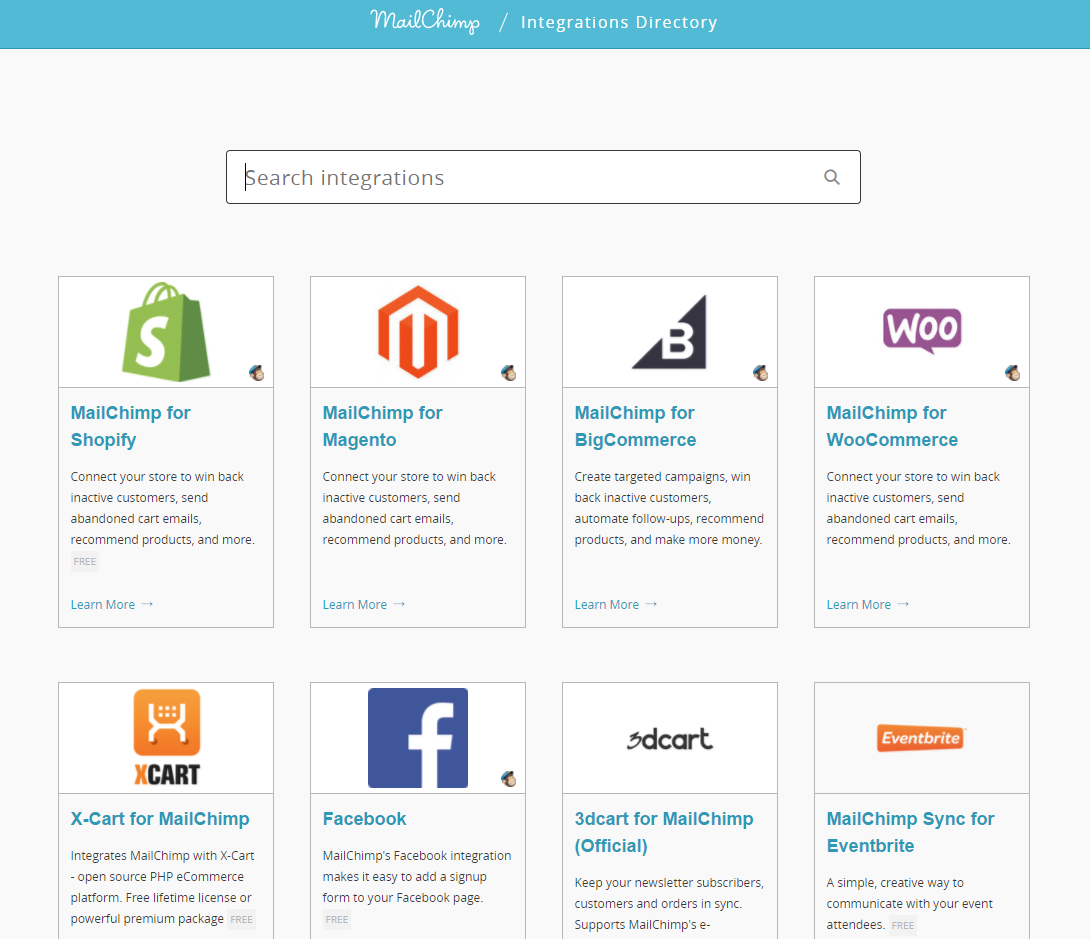When it comes to email marketing, we’ve helped businesses use a ton of different tools at Exothermic. Depending on your company means you may have different priorities and needs. Fishbowl, for example, is one of the main email marketing programs for restaurant and food-chains. Bronto and Listrak, on the other hand, works more with larger e-commerce corporations.
But if you’re a small business getting started or even a larger one doing your first email marketing push – MailChimp is currently our go-to recommendation.
Forever Free
MailChimp was one of the first email marketing providers who created a free plan and then stuck with it. To date, they still have a “Forever Free” account tier where you can have up to 2,000 subscribers and send those subscribers up to 12,000 emails per month.

They don’t require a credit card, a contract or anything other hassles.
Integrations
If you’re using WordPress or another common content management system (CMS), any of the top e-commerce tools (Magento, Shopify, WooCommerce or BigCommerce), Salesforce or other notable customer relationship management (CRM) tools – the list of compatible integrations with MailChimp goes on and on.

Integrations are important for tools in your “marketing stack” so they can play nicely together. You wouldn’t want an email marketing tool that can’t connect with your website, for example, because then you’d have a really hard time providing an easy way for people to sign-up. Speaking of…
Sign-up Forms
MailChimp does a really, really great job of making it easy for you to add people to your system. A lot of systems we’ve used before have very convoluted sign-up processes or data migration processes if you’re taking names from one system and adding them to another.
Sign-up forms and other methods for getting contacts actually into your database are key to growing your email marketing efforts. MailChimp does well at holding your hand through this process and making it easy for nontechnical people to set these components up.
Continuous Improvements
They’ve also come a long way. MailChimp used to be the go-to for start-ups and more technical people because although they had a free plan, it used to be ideal only for teams that were able to upload their own HTML into the system to send it off. Which meant you had to have someone savvy with HTML to make good use of it.
Now, they’ve made continuous improvements to make the user interface (UI) more intuitive and enabled people with no technical skills to get up and running.
It’s still not the most intuitive but with some guidance (and actually taking the time to read their really excellent support materials), just about anyone can get by.
It’s easy to move on
If you outgrow MailChimp’s free plan, they make it very easy to upgrade but also to move on to another system. MailChimp used to be a stepping-stone service but they are doing more and more lately to keep users within their system – and being very transparent about it, too. They even opened their own business and used MailChimp in their “What’s in Store” series to walk people through their own experiences.
All in all, it’s our go-to for getting brands new to email marketing onto a system over other tools like Constant Contact, AWeber, MadMimi, MyEmma and Hatchbuck.
That being said – if you’re new to email marketing and you have the money to invest (rather than opt for free), you may also want to check out Hatchbuck, a relatively new player in this scene that we’ve come to really like.






